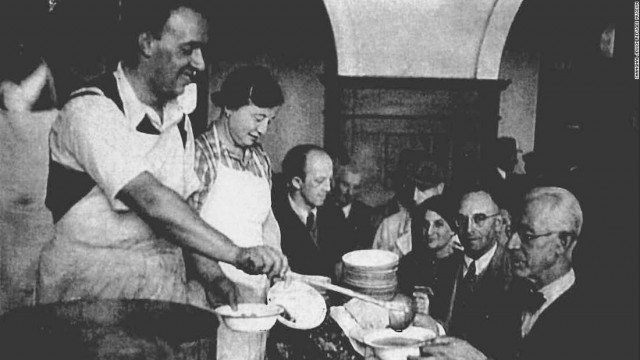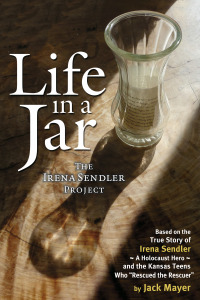Holocaust Curriculum
for Human Rights and Genocide
Published for the California State Board of Education

NOTE: The Holocaust Curriculum shared below is from a class taught by two of the original advisors to Remember.org, and is shared so teachers can get an idea of attempts to create a model Holocaust Curriculum in California.
What still works today? What needs to be adapted? How does this apply to your Holocaust Curriculum?
Check out the Remember.org Holocaust Study Guide
The document was developed pursuant to Assembly Bill 1273 (1985) and was published for the California State Board of Education by the California Department of Education, 721 Capitol Mall, Sacramento, California (mailing address: P.O. Box 944272, Sacramento, CA 94244-2720). It was printed by the Office of State Printing and distributed under the provisions of the Library Distribution Act and Government Code Section 11096.
© 2000 by the California Department of Education All rights reserved
ISBN 0-8011-1513-2
Acknowledgment
The California State Board of Education acknowledges especially the Connecticut State Department of Education for permission to reprint several sections of Human Rights: The Struggle for Freedom, Dignity and Equality, which was published in 1987
Holocaust Curriculum
Foreword 2000
“It is of deep importance in our increasingly multicultural society and our interdependent world that our students recognize the sanctity of life and the dignity of the individual.
We want to instill in our students a respect for each person as a unique individual. We want our students to understand that concern for ethics and human rights is universal and represents thea spirations of men and women in every time and place.”
These words are no less true today than they were when the Model Curriculum for Human Rights and Genocide was issued in 1988. The reprinting of this model curriculum reflects the wishes of the people of California and their legislative representatives to give local curriculum leaders and teachers continued guidance in classroom practices.
As in 1988, this model curriculum supports the curriculum and instruction described in the History–Social Science Framework. Since then the history–social science curriculum has been reinforced with academic content standards, and this model curriculum is supported by the history–social science content standards that were adopted by the State Board of Education in 1998.
Thanks are due to the California State Legislature for providing the resources to update and reprint this model curriculum. It is hoped that teachers will prepare students to be rational, humane decision makers and active citizens in our democracy.
By understanding what has happened in the absence of democratic principles and rule of law, students, the future citizens, will be dedicated to the protection of human rights in the twenty-first century.
Preface 2000
In 1995 Governor Pete Wilson signed Assembly Bill 265 into law, which mandated the formation of the Academic Standards Commission. In 1998 the State Board of Education adopted academic content standards for history– social science that were aligned with the History–Social Science Framework.
The framework references in this model curriculum are still accurate, but it is also necessary to cite the different content standards that support this curriculum. Just as the framework has an ethical literacy strand that runs through all the grades, so too do the standards. Those that support the model curriculum are identified below. Users of this document may find this curriculum supportive of other history–social science standards.
Kindergarten
K-6 Students understand that history relates to events, people, and places of other times.
- Identify the purposes of, and the people and events honored in, commemorative holidays, including the human struggles that were the basis for the events (e.g., Thanksgiving, Independence Day, Washington’s and Lincoln’s Birthdays, Martin Luther King Jr. Day, Memorial Day, Labor Day, Columbus Day, Veterans Day).
- Know the triumphs in American legends and historical accounts through the stories of such people as Pocahontas, George Washington, Booker T. Washington, Daniel Boone, and Benjamin Franklin.
Grade One
1.1 Students describe the rights and individual responsibilities of citizenship.
2. Understand the elements of fair play and good sportsmanship, respect for the rights and opinions of others, and respect for rules by which we live, including the meaning of the “Golden Rule.”
1.5 Students describe the human characteristics of familiar places and the varied backgrounds of American citizens and residents in those places.
- Recognize the ways in which they are all part of the same community, sharing principles, goals, and traditions despite their varied ancestry; the forms of diversity in their school and community; and the benefits and challenges of a diverse population.
- Understand the ways in which American Indians and immigrants have helped define Californian and American culture.
- Compare the beliefs, customs, ceremonies, traditions, and social prac tices of the varied cultures, drawing from folklore.
Grade Two
2.5 Students understand the importance of individual action and character and explain how heroes from long ago and the recent past have made a difference in others’ lives (e.g., from biographies of Abraham Lincoln, Louis Pasteur, Sitting Bull, George Washington Carver, Marie Curie, Albert Einstein, Golda Meir, Jackie Robinson, Sally Ride).
Grade Three
3.4 Students understand the role of rules and laws in our daily lives and the basic structure of the U.S. government.
- Discuss the importance of public virtue and the role of citizens, including how to participate in a classroom, in the community, and in civic life.
- Know the histories of important local and national landmarks, symbols, and essential documents that create a sense of community among citizens and exemplify cherished ideals (e.g., the U.S. flag, the bald eagle, the Statue of Liberty, the U.S. Constitution, the Declaration of Indepen dence, the U.S. Capitol).
- Describe the lives of American heroes who took risks to secure our freedoms (e.g., Anne Hutchinson, Benjamin Franklin, Thomas Jefferson, Abraham Lincoln, Frederick Douglass, Harriet Tubman, Martin Luther King, Jr.).
Grade Four
4.4 Students explain how California became an agricultural and industrial power, tracing the transformation of the California economy and its political and cultural development since the 1850s.
- Discuss immigration and migration to California between 1850 and 1900, including the diverse composition of those who came; the countries of origin and their relative locations; and conflicts and accords among the diverse groups (e.g., the 1882 Chinese Exclusion Act).
- Describe rapid American immigration, internal migration, settlement, and the growth of towns and cities (e.g., Los Angeles).
Grade Five
5.3 Students describe the cooperation and conflict that existed among the American Indians and between the Indian nations and the new settlers.
1. Discuss the role of broken treaties and massacres and the factors that led to the Indians’ defeat, including the resistance of Indian nations to encroachments and assimilation (e.g., the story of the Trail of Tears).
5.6 Students understand the course and consequences of the American Revolution.
1. Understand how the ideals set forth in the Declaration of Independence changed the way people viewed slavery
5.7 Students describe the people and events associated with the devel opment of the U.S. Constitution and analyze the Constitution’s significance as the foundation of the American republic.
1. Understand the fundamental principles of American constitutional de mocracy, including how the government derives its power from the people and the primacy of individual liberty.
2. Discuss the meaning of the American creed that calls on citizens to safeguard the liberty of individual Americans within a unified nation, to respect the rule of law, and to preserve the Constitution.
Grade Six
6.3 Students analyze the geographic, political, economic, religious, and social structures of the Ancient Hebrews.
2. Identify the sources of the ethical teachings and central beliefs of Judaism (the Hebrew Bible, the Commentaries): belief in God, observance of law, practice of the concepts of righteousness and justice, and importance of study; and describe how the ideas of the Hebrew traditions are reflected in the moral and ethical traditions of Western civilization.
6.4 Students analyze the geographic, political, economic, religious, and social structures of the early civilizations of Ancient Greece.
- Trace the transition from tyranny and oligarchy to early democratic forms of government and back to dictatorship in ancient Greece, including the significance of the invention of the idea of citizenship (e.g., from Pericles’ Funeral Oration).
6.5 Students analyze the geographic, political, economic, religious, and social structures of the early civilizations of India.
- Explain the major beliefs and practices of Brahmanism in India and how they evolved into early Hinduism.
- Outline the social structure of the caste system.
- Know the life and moral teachings of Buddha and how Buddhism spread in India, Ceylon, and Central Asia.
6.6 Students analyze the geographic, political, economic, religious, and social structures of the early civilizations of China.
1. Know about the life of Confucius and the fundamental teachings of Confucianism and Taoism.
6.7 Students analyze the geographic, political, economic, religious, and social structures during the development of Rome.
1. Describe the government of the Roman Republic and its significance (e.g.,written constitution and tripartite government, checks and bal ances, civic duty).
2. Note the origins of Christianity in the Jewish Messianic prophecies, the life and teachings of Jesus of Nazareth as described in the New Testament, and the contribution of St. Paul the Apostle to the definition and spread of Christian beliefs (e.g., belief in the Trinity, resurrection, salvation).




